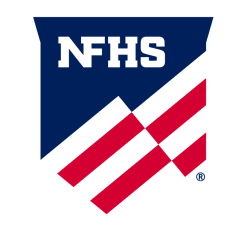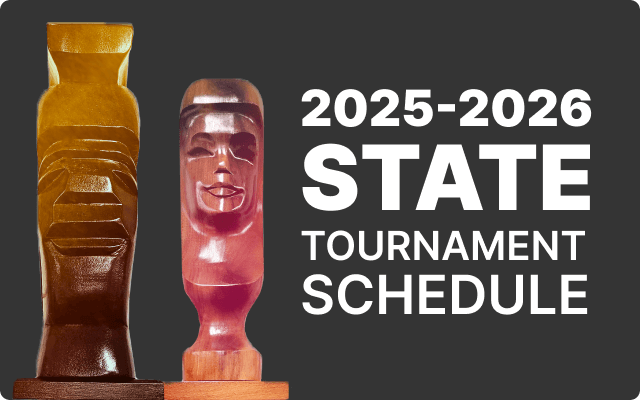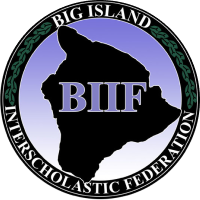The NFHS Voice

 The NFHS Voice
The NFHS Voice
Schools Should Consider Other Sports, Activities to Meet Needs of More Students
Dr. Karissa L. Niehoff, NFHS Executive Director
One of the familiar sentiments expressed during the pandemic was, “I will be glad when things return to normal.” Now, two years removed from the March 2020 shutdown, we are trying to remember what “normal” was and whether that is still the best way moving forward.
High school sports and performing arts programs in our nation’s schools are closer to “normal” than they have been in two years. However, the question now perhaps is whether “normal” is sufficient to meet the needs of high school students.
With issues that have worsened during the pandemic – physical inactivity, mental health challenges, teen suicides – school leaders may be faced with discovering a new “normal” that provides more students opportunities to participate in these vital programs.
From 1989 to 2018, participation in high school sports climbed from 5.2 million to 7.9 million participants. Then, in the 2018-19 school year – the final full year before the pandemic – the NFHS reported a drop in sports participation for the first time in 30 years.
The NFHS is tracking participation for the first time in two years and will have those figures in early fall; and while we are cautiously optimistic that activity levels are on the rise again, we recognize “normal” may need to be redefined to meet the needs of all students who are interested in high school activity programs.
Earlier this month, The Aspen Institute suggested some ways that schools could engage more students in sport and physical activity as a part of its Project Play report. While the interscholastic model of education-based sports in our nation’s schools has been successful for more than 100 years, the report suggests that schools explore other options to ensure that all students receive an opportunity to participate.
One of eight sections in the Project Play report is “Introduce Other Forms of Play.” In addition to interscholastic sports, which accounted for almost eight million participants in the last NFHS survey, the Aspen report suggests schools consider offering intramurals, clubs led by students, and opportunities for community-based activities.
The NFHS encourages involvement in any activity program that addresses the health and wellness – and growth and development – of high school students. Some of these other options may meet the needs of students who have not previously been involved in any school activity, and expanding opportunities for more student involvement should be an ongoing goal of every school. Inasmuch as facilities are available and adults are available to lead programs, expansion should always be the goal.
Beyond other models, the scope of interscholastic sports could be enlarged to accommodate students who may be interested in additional sport offerings – perhaps those activities that could involve larger numbers of students at minimal costs to the school.
In fact, recent NFHS participation surveys have indicated that schools are beginning to offer additional sports. While some of the traditional sports such as football, basketball and baseball have remained steady and/or experienced declines in the past 10 years, other sports have registered significant gains. Participation in boys and girls lacrosse has increased 19 percent during that time, and girls and boys soccer has gained 70,668 participants since 2012 – a nine percent increase.
Interest in boys volleyball (26 percent gain) and girls volleyball (eight percent gain) has continued to climb the past 10 years, and competitive spirit has increased 38 percent during that time.
Offering new sport opportunities is already in motion in many states. The 2018-19 survey indicated participation by high school students in 70 different sports, as well as 14 adapted sports for students with disabilities. Some of the more popular non-traditional sports were bowling, weightlifting, badminton, flag football and archery.
In addition to sports, schools should consider opportunities for student participation in performing arts and other activity programs. It is estimated there are currently six to eight million participants in music, speech and debate, and theatre programs, as well as other activities such as Scholastic Bowl, journalism, creative writing, academic competition, chess, yearbook, cheer/dance, art, newspaper/magazine production, math team, rodeo, among many others.
One of the components of the 2021-2025 NFHS Strategic Plan is Student, Mental, Emotional and Physical Wellness. We know from surveys conducted in 2020 that when sports and other activities were put on hold during the pandemic, large numbers of students suffered from depression and anxiety, and there were increased numbers of suicide reported by some states.
These studies confirmed that involvement in high school sports and activities can play a critical role in the social, emotional and mental health of high school students. The NFHS has produced an online education course through the NFHS Learning Center – Student Mental Health and Suicide Prevention – and the NFHS Sports Medicine Advisory Committee will continue to offer guidance in this area.
We know that high school students missed involvement in sports, performing arts and other activities during the pandemic, so the value of these programs, as well as other options suggested in the Project Play report, has become even more significant.
The ultimate goal is to involve as many students as possible in high school sports and other activity programs, or other school-based activities that promote growth and development and better prepare students for life after high school graduation.
Dr. Karissa L. Niehoff is in her seventh year as chief executive officer of the National Federation of State High School Associations (NFHS) in Indianapolis, Indiana. She is the first female to head the national leadership organization for high school athletics and performing arts activities and the sixth full-time executive director of the NFHS. She previously was executive director of the Connecticut Association of Schools-Connecticut Interscholastic Athletic Conference for seven years.









